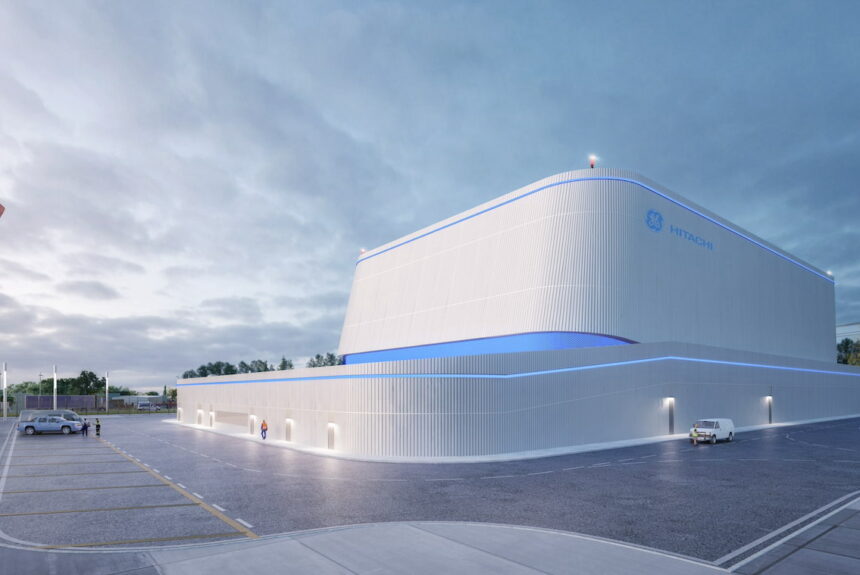Could nuclear power, the largest source of carbon-free energy in the U.S., be used to power carbon removal? The U.S. Department of Energy (DOE) thinks so and has set out to help fund research that could prove it. Recently, DOE announced funding for two projects that will explore the feasibility of using nuclear energy to power direct air capture (DAC) technology. The projects will be headed up by GE Vernova and Northwestern University.
>>>READ: 2023 Has Been the Year of Carbon Removal
With the DOE funding, GE Vernova will conduct a pre-feasibility assessment to determine whether or not the company should establish a DAC regional hub in Houston, Texas. This hub would aim to remove up to one million metric tons of carbon emissions annually using GE Hitachi’s BWRX-300 small modular reactor and renewable energy sources. The Department of Energy has committed $2.55 million to the project. Other sources have contributed $762,827 to the research.
Northwestern University is the second project to receive DOE funding, this time to the tune of $3 million. The university’s researchers are working on a project called the Midwestern Nuclear DAC Hub. This project has been designed to assess the feasibility of deploying a large-scale DAC plant powered by nuclear power. The Midwest is the second-largest regional emitter of carbon dioxide in the United States, which makes the creation of this nuclear-powered DAC hub all the more important. Other sources have contributed $927,910 to study whether something of this scale could work.
Direct air capture has received increased attention from both the public and private sectors this year. In August, the Department of Energy announced $1 billion in funding to Occidental and Battelle for two direct air capture projects. Occidental’s hub will be located in Corpus Christi, Texas while Battelle’s will be in Louisiana. When they are fully operational, these two hubs will be able to remove a combined 2 million tons of CO2 annually. In addition to these two projects, the DOE will also announce funding for two more DAC facilities in the near future. The Department of Energy has also recently released a Notice of Intent for CDR projects ranging from marine carbon dioxide removal to small mineralization pilots.
>>>READ: Fervo Energy Announces Combined Geothermal and Direct Air Capture Plant
The nuclear and oil and gas industries are not the only ones that are investing in direct air capture. In February Houston-based geothermal developer Fervo Energy announced that it would begin the design and engineering of a fully integrated geothermal and DAC facility. The company expects to complete the facility within the next five years. Once it is completed, it will be the first of its kind geothermal-powered DAC plant.
Direct air capture, while a promising climate solution, is an energy-intensive process. While efficiency gains in the technology will likely occur, the process will need to be powered by reliable carbon-free energy sources to ensure that it is truly a carbon-negative technology. Marrying nuclear power with DAC, as DOE and the private sector are aiming to do, will go a long way in advancing and deploying direct air capture technology across the United States.
Kelvey Vander Hart is a native Iowan, a member of the American Conservation Coalition, and a communications specialist at Reason Foundation.
The views and opinions expressed are those of the author’s and do not necessarily reflect the official policy or position of C3.
